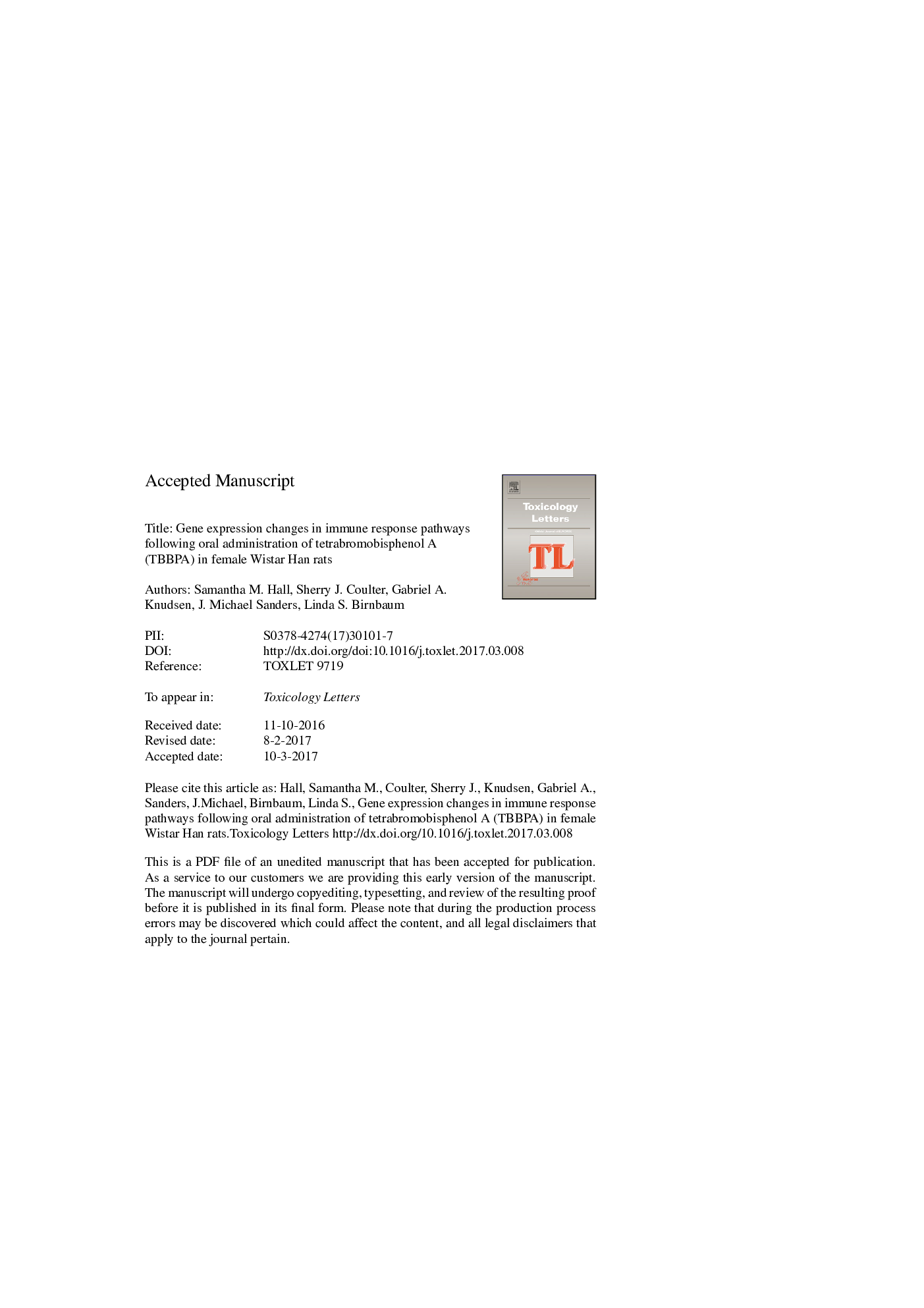| Article ID | Journal | Published Year | Pages | File Type |
|---|---|---|---|---|
| 5562135 | Toxicology Letters | 2017 | 23 Pages |
Abstract
Tetrabromobisphenol A (TBBPA) is a brominated flame retardant used globally at high volumes, primarily in the epoxy resin of circuit boards. It has been detected in the environment and in humans. The National Toxicology Program found that chronic oral TBBPA treatment of 250Â mg/kg and higher caused an increased incidence of uterine lesions in female Wistar Han rats. The present laboratory has previously reported changes in gene expression associated with estrogen homeostasis in liver and uterine tissue of adult female Wistar Han rats after five days of gavage with 250Â mg/kg of TBBPA. Microarray analysis of tissue from these same TBBPA-treated rats was performed to detect additional pathways perturbed by TBBPA. Microarray analysis of uterine tissue detected downregulation of genes in pathways of the immune response following TBBPA treatment. These results, along with validation of associated gene expression changes using droplet digital PCR, are reported here. Our findings suggest mechanisms that may be related to estrogen-mediated immunosuppression.
Related Topics
Life Sciences
Environmental Science
Health, Toxicology and Mutagenesis
Authors
Samantha M. Hall, Sherry J. Coulter, Gabriel A. Knudsen, J. Michael Sanders, Linda S. Birnbaum,
